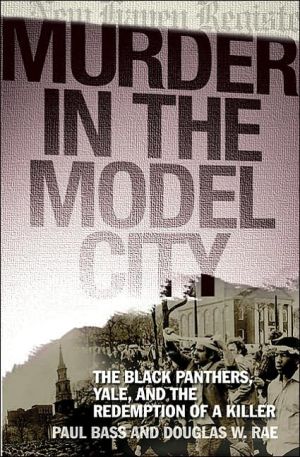

 |

|

The average rating for Murder in the Model City: The Black Panthers, Yale, and the Redemption of a Killer based on 2 reviews is 2 stars.
Review # 1 was written on 2008-08-14 00:00:00 Rima Fazzah Rima FazzahAfter reading Douglas Rae's previous book, 'City', I was pretty stoked to learn that he'd co-authored another book about my hometown, New Haven, CT. Moreover, it was about the semi-legendary days surrounding the trial of Erica Huggins and Bobby Seale, a time I'd heard occasional mentions of from long time New Haven activists while growing up. While the authors describe their project well, bringing rich detail to figures on both sides of the political divide that had previously been reduced to caricatures, and providing the historical context to understand the emotions that surrounded the trial, they fail to pull this off. Although the clunky, awkward prose doesn't help matters (I have to assume the first author Paul Bass is the responsible party here, as Rae's other book was competently written), the real failure lies with the authors deep rooted mistrust for radical or revolutionary agendas. For example, the authors advance the thesis that the real reason Hoover and Nixon pursued COINTELPRO, etc, wasn't to oppose radical activists. Rather, COINTELPRO was intended to politically weaken white, pro-establishment liberals. By creating fear of the radical left in middle America, Nixon, et al., would put these moderate liberals, who the authors believe were the only credible threat to the 'silent majority' Nixon conservatives, in an awkward position. In another section, the narration of the large May Day protest is dominated by the stories of Archibald, Kingsley, and Chauncey, administrators from Yale and Harvard who heroically picnicked in the countryside to plan Yale's response to the protests at the expense of the stories of people who actually organized the protests. This exemplifies a pattern that continues throughout the book, where individuals who fit well within a liberal academic framework - the credentialed, the cooler-headed, the better educated, the well spoken, and so on - are given the authors attention and sympathy. Nowhere is this more apparent than in the narrative surrounding the book's principle protagonist, Warren Kimbro. Kimbro was a community organizer working for CPI and other 'War on Poverty' programs that came out of New Haven's ill fated urban renewal projects. He was swept up in (what the author's dismissively refer to as) 'panthermania', separated from his first wife after starting a relationship with Erica Huggins, and eventually killed a suspected police informant on orders from the party. After his arrest he was, in the authors words, 'redeemed', by turning state's witness and returning to his earlier efforts at organizing assistance programs within the establishment. He parlayed his cooperation with the prosecutors and prisons into an early release and spent the rest of his working life working either at universities or government social service programs. The author's are only too happy to overlook domestic violence, estranged children, unhappy coworkers, and inconvenient events to tell their story of a man redeemed from the excesses of his youth. Photographs of Warren and his son standing with Connecticut's own Joe Lieberman to receive and award for a black father's involvement organization, and another showing Kimbro presenting an community service award plaque to Nick Pastore, the officer who illegally wiretapped the Panther headquarters and arrested Kimbro after the murder before rising to Chief of Police, further illustrate the qualities the authors are seeking to lionize in Kimbro. Ultimately, I think the authors made a genuine effort at achieving the goals they set out. They fell short because they were not prepared to engage meaningfully with this legacy of the Panthers, instead seeing the events surrounding the trial, and the fate of the BPP, as evidence in support of the agendas of establishment liberals. Original research and interviews do make this book worth reading for anyone with a particular interest in the events it covers. |
Review # 2 was written on 2008-08-14 00:00:00 Stephen Carter Stephen CarterFascinating true story about the murder of a Black Panther associate who was thought to be a spy by his fellow Panthers and as a result was executed. It's both a tragedy, involving the fall of a once-promising local youth leader in the New Haven black community, and his subsequent redemption in prison and return to society. The book gives you a full flavor of the radical 60s, complete with characters like Abbie Hoffman and Bobby Seale (the latter who was put on trial for conspiracy to commit the murder and the former who led demonstrations against the trial). The book does a wonderful job of discussing the conflicts of the time, as well as pointing to the reasons that the radical student movement gradually crumbled into non-existence. It's a very accessible read. |
CAN'T FIND WHAT YOU'RE LOOKING FOR? CLICK HERE!!!